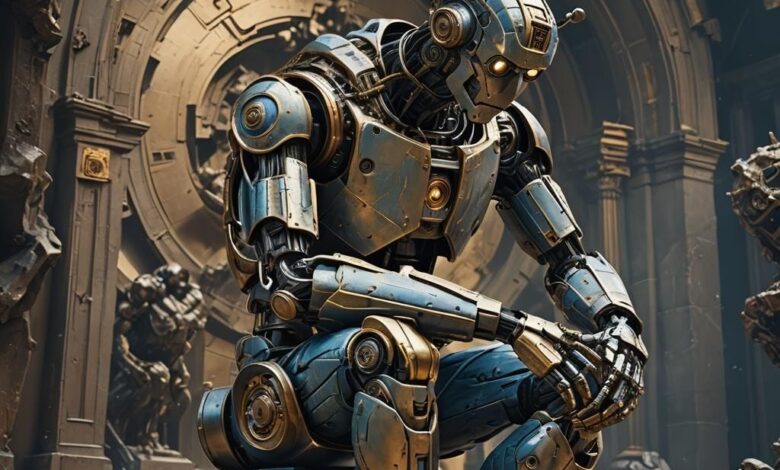What is Artificial Intelligence, Really? | by Paul Siemers, PhD | Brain Labs | Apr, 2024

Artificial Intelligence (AI) looms darkly over our future. According to a 2022 Monmouth University poll, more than half of Americans are worried that AI could one day pose a risk to the human race. Only 9% believe that AI will do more good than harm.
Yet our understanding of what AI actually is remains remarkably undeveloped. I do not mean that we are uninformed about the technical details of AI, though no doubt this is the case. I mean that at a simpler and deeper level we do not understand what kind of thing AI really is. Is it a machine, or an idea, or an area of endeavour, or an historical trend? Or somehow all these things at the same time? We cannot hope to control AI without grappling with what it is. We cannot hope to channel or exploit it. Or to thwart it, if that is our desire.
As I explained in previous articles (“What is Technology, Really?” and “Seven Faces of Technology”) I do not think this problem is unique to AI. In general, we struggle to grasp technology. This hinders our ability to use it well.
In this article, I will start to show why AI is confusing to deal with, by explaining how it blurs the line between vision and reality.
When we ask, “What is AI?” the most logical response might seem to be a definition. The Organization for Economic Cooperation and Development (OECD) admits that “getting agreement on a definition for an AI system in any sector or group of experts has proven to be a tough task.” Then, it offers the following definition.
“An AI system is a machine-based system that for explicit or implicit objectives, infers, from the input it receives, how to generate outputs such as predictions, content, recommendations, or decisions that can influence physical or virtual environments. Different AI systems vary in their levels of autonomy and adaptiveness after deployment.” — OECD.AI Policy Observatory
This definition bears the marks of intensive committee work. Such work was no doubt needed to make it generally acceptable. For example, it carefully avoids any reference to the tricky topic of “intelligence”.
Contrast the following headlines gleaned from Google News:
“AI ‘apocalypse’ could take away almost 8m jobs in UK, says report” — The Guardian
“Plenty of time for investors to jump on AI thematic” — The Australian
“A.I. Leaders Press Advantage with Congress as China Tensions Rise” — The New York Times
“AI can help us find the right policies to fix the housing crisis” — The Guardian
“Inside the shadowy global battle to tame the world’s most dangerous technology” — Politico
“Why are women being sidelined in the AI race?” — FastCompany
“Amazon pours an additional $2.75 billion into AI startup Anthropic” — Associated Press
“The AI doctor will see you…eventually” — The Economist
“Can journalism survive AI?” — Brookings Institution
These headlines paint AI as exuberantly diverse — truly a many-headed beast. It is an apocalyptic threat. It endangers gender equity. It is an investment theme. It plays a role in global politics. It is a kind of start-up. It is the nemesis of journalism. It is the world’s most dangerous technology. It is even a type of doctor.
Given enough bridging explanation, these can all be squared with the OECD definition. But, at the same time, the definition hardly prepares us for the many faces of AI we are confronted with daily. By analogy, Greece may be defined as “the southernmost country in the Balkans”. This is true. But how much would this definition help you to prepare for a Greek holiday, or to understand contemporary Greek politics? It is true but not all that useful.
I do not believe that the answer lies in a better definition of AI. Rather, I think that looking for a definition is simply the wrong approach. A definition of AI is most useful when we are sitting in judgment. The definition tacitly assumes we will be presented with a series of things and must judge whether each one of them is, or is not, an AI. But we are not judges, we are explorers. We are confronting AI “in the wild” and must decide how to deal with it. We are more in need of a guidebook than a definition.
A good place to start our exploration of AI seems to be with the concept of AI. This is, indeed, how many discussions of AI commence.
From this perspective, the essential nature of AI is a concept or, more exactly, a vision. This concept rests on the notion of intelligence, which is, after all, baked right into the term “Artificial Intelligence”. The assumption is that intelligence is something that exists, something that we can recognise. In particular, intelligence is something that we ourselves possess. “Artificial Intelligence” expresses the aspiration that this thing, intelligence, can be artificially generated. This concept seems at first to provide a strong foundation for the meaning of AI, and to pre-date the emergence of AI in the real world.
This vision is, however, more blurred than might at first appear. There is no strong consensus on what intelligence is. For example, see the Wikipedia article on intelligence. The article refers to the many possible capacities involved in intelligence, including, “abstraction, logic, understanding, self-awareness, learning, emotional knowledge, reasoning, planning, creativity, critical thinking, and problem-solving”.
In particular, discussions of intelligence are often undermined by philosophically difficult arguments about the difference between “real” intelligence and “apparent” intelligence, along the lines of, “Can computers think, or can they only simulate thought?” AI has had many amazing accomplishments. It is the best in the world at chess, Go, and Jeopardy. It has even passed medical board exams. But we still hold on to the idea that it is not “truly” intelligent.
There is thus no agreed decision procedure for whether AI has been achieved. Rather than being a goal line to be crossed, or a vision to be fulfilled, AI becomes an ever-receding horizon of possibility. The answer to whether computers are intelligent remains “yes, in a way”. Arguably this has been the case at least since Charles Babbage built the “Difference Engine” in the 1820s.
“What AI is” is closely tied to the concept of AI. We have, however, seen that this concept is rather puzzling and elusive. It also does not prepare us for the headlines quoted above. Say AI is only some future state. Say we can never be sure that we have reached it. Then why is it attracting billion-dollar investments and causing consternation in the halls of power? To understand this, let’s turn to the real-world actuality of AI.
AI is not only a concept or a vision. It also exists “in the wild” so to speak, in the concrete world of everyday experience
For example, there are AI tools. These are being deployed in increasing numbers. New tools and even new types of tool keep appearing. Many varieties of AI have appeared in newspapers and the workplace. For example, machine learning, natural language processing, chatbots, and generative AI. These do not exist in isolation. They are part of a system of practice. This system includes projects, consultancies, evangelists, entrepreneurs, regulators, and training courses. Without this ecosystem, AI tools could not be effectively deployed to address real-world problems. Another key part of this ecosystem is commerce and investment. It involves start-ups, listings, venture capitalists, product launches, stock markets, and advertisements. This business side of AI is also fundamental to AI as a whole. Continuing investment remains essential to the ongoing development of AI tools.
Thus, for many millions of people, AI is part of a daily life. They may be running an AI start-up or working on an AI project. They might be using ChatGPT to help write an essay or relying on Google Maps to find the quickest route to the office. Most of these people are not reflecting on whether or not AI is truly intelligent. They are engaged in coping with AI as it is.
Think of your own experience in using GPS navigation, or interacting with a chatbot. By your interaction you are treating the app as though it is possessed of some degree of intelligence, however limited this may be. The app knows something that you do not and is in a position to assist you. In reflective mode you may doubt that any app is intelligent, but this is belied by your actions.
To recap: we have seen that there at least two distinct aspects of AI. There is the grand concept of AI — a concept so lofty that it is not certain that we will ever reach it (or that we would know if we did). Then there is the messy, lived reality of AI in which millions of people are engaged every day. So which of these two is the “real” AI?
Perhaps Conceptual AI has the stronger claim to be “real”? After all, the idea of AI came before any serious practical attempt to develop artificial intelligence. Indeed, it established the goal towards which Actual AI is striving.
Actual AI, on the other hand, has the advantage of tangibility. Actual AI is a lived reality for hundreds of millions of people. Compared with this, Conceptual AI seems pallid and anemic, of academic interest only.
There are echoes here of more general philosophical disputes. The arguments above may seem like those of the Ancient Greeks, who debated the link between real dogs and the idea of “dog”. However, the case for AI is rather different. For dogs, it is probable that the concept of “dog” developed to describe what actual dogs had in common. The concept of AI has played a different and more powerful role, acting as the motive force to conjure actual AI into existence.
In fact the choice between Conceptual AI and Actual AI is an illusory one, a false dichotomy. For us to account for AI as we know it requires us to grasp Conceptual AI, Actual AI, and the relationship of dynamic tension that exists between them. The argument about which is more real is futile — the basis for their reality is simply different. For all intents and purposes they serve as foundations for each other. AI as we know it necessarily contains both Conceptual AI and Actual AI.
In this article I have tried to demonstrate that the nature of AI warrants careful consideration. I have shown that it is made up of at least two elements — a “conceptual” element and an “actual” element — which have a dynamic relationship with each other.
When claims are made about AI, it is useful to reflect on whether these are claims about Conceptual AI, Actual AI, or both. For example, when it is stated that, “Amazon pours an additional $2.75 billion into AI startup Anthropic” this is a claim about Actual AI. It has little to do with Conceptual AI. It describes a real-world investment into a real-world company.
But when it is claimed that, “AI can help us find the right policies to fix the housing crisis” what does this mean? Is it a claim that Actual AI, in its current state, can find these policies? Or is it a claim that if the vision of AI was realized, then these policies could be found? Or is it some intermediate claim? Perhaps it claims that these policies can be found if Actual AI can progress some (unspecified) distance along the path to the (somewhat hazy) AI vision.
AI is thus a complex beast. It lies suspended between the actual and the conceptual. It also lies between the present and the future. It is this complexity which makes AI so unsettling, and claims about AI so slippery and hard to evaluate. We are used to dealing with concepts, and to dealing with concrete objects. We are less used to grappling with entities that span both these elements.
In my view, we cannot achieve a better understanding of AI by ignoring this complexity. Instead, the way forward lies in dissecting the nature of AI in more detail, using multiple perspectives to reveal more of its hidden faces. It is only by coming to terms with its true complexity that we can engage it effectively. If we continue to think naively about AI, AI will continue to baffle and astonish us.



